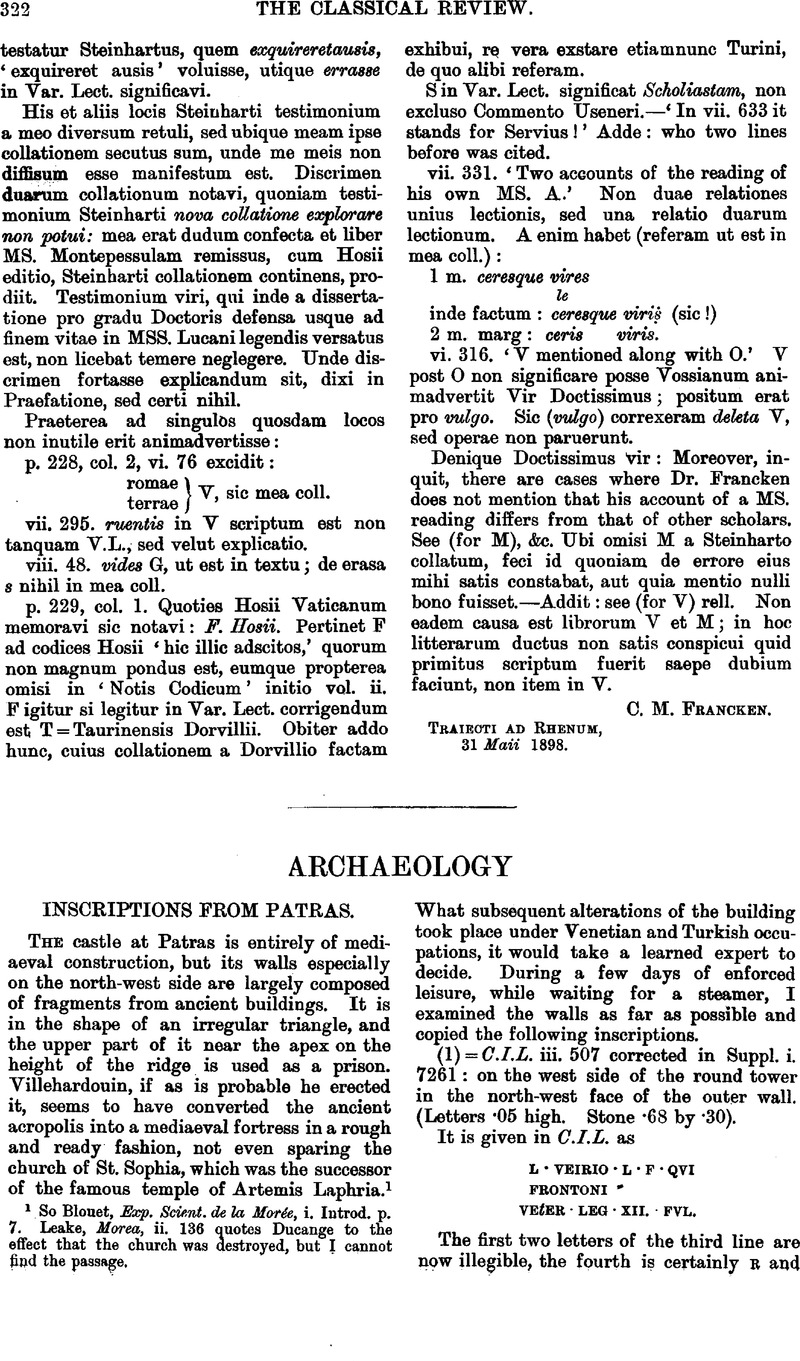No CrossRef data available.
Published online by Cambridge University Press: 27 October 2009

page 322 note 1 So Blouet, Exp. Scient. de la Morée, i. Introd. p. 7. Leake, Morea, ii. 136 quotes Ducange to the effect that the church was destroyed, but I cannot find the passage.
page 323 note 1 Those who care to see what it was like will find it in P. Litta, Famiglie celebri di Italia, Pt. 159, Tav. 1 (L. Passerini).
page 323 note 2 According to Phrantzes, Chronicon, ii. 10 to Theodore. Phrantzes also seems to imply that she died at Sparta, not at Pesaro.
page 325 note 1 So Overbeck-Mau, Pompeii, Leipsie, 1884 ; Duhn and Jacobi, der griechische Tempel in Pompeii, Heidelburg, 1890 ; but Mau in his Führer durch Pompeii, 2te Aufl. 1896, p. 35 shows seven columns.
page 326 note 1 ‘The Museo Ludovisi contained, perhaps, more masterpieces of Greco-Roman art than Sallust and his Imperial successors had been able to gather in the gardens.’—Lanciani, The Ruins and Excavations of Ancient Rome, p. 418.
page 327 note 1 See Griechische Originalstatuen in Venedig, Adolf Furtwängler, Munich, 1898.
page 327 note 2 Intermezzi. No. 4, p. 67 ff.